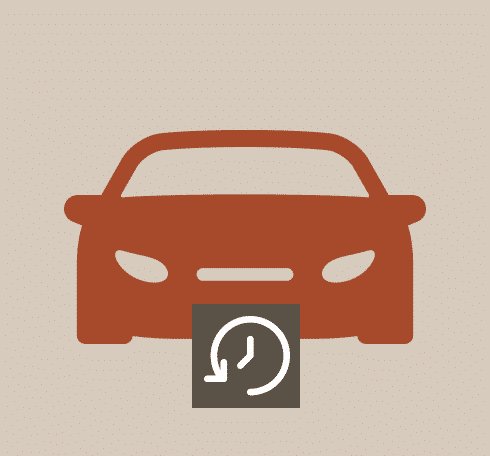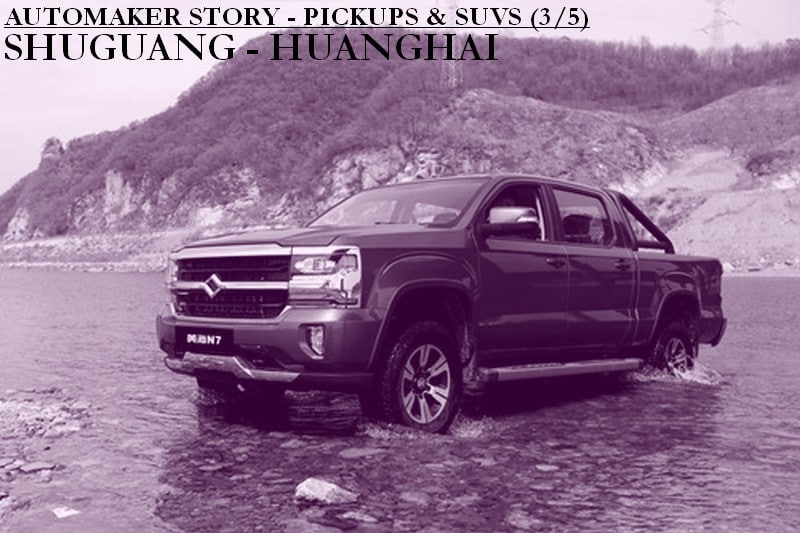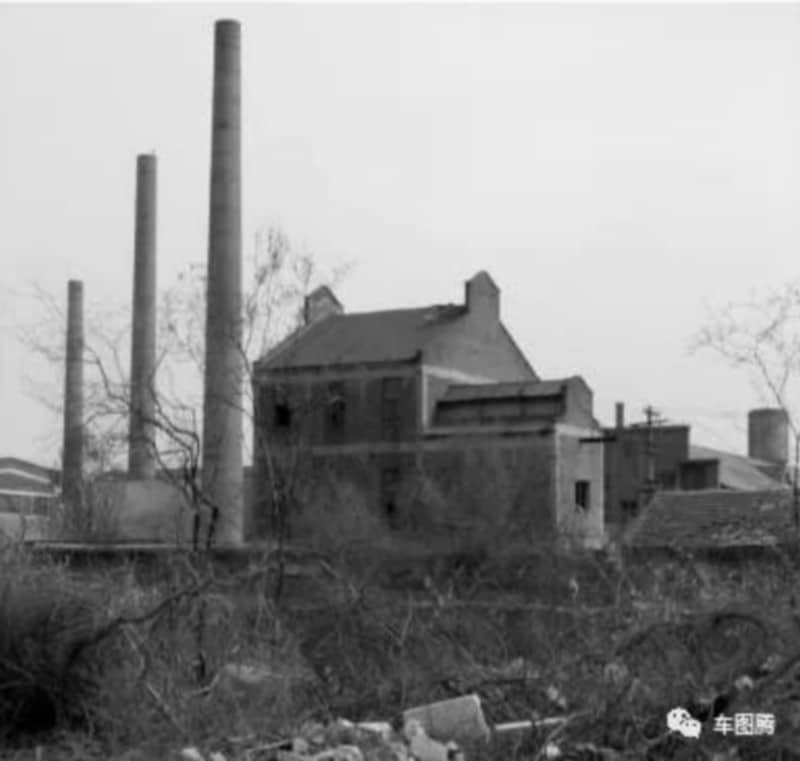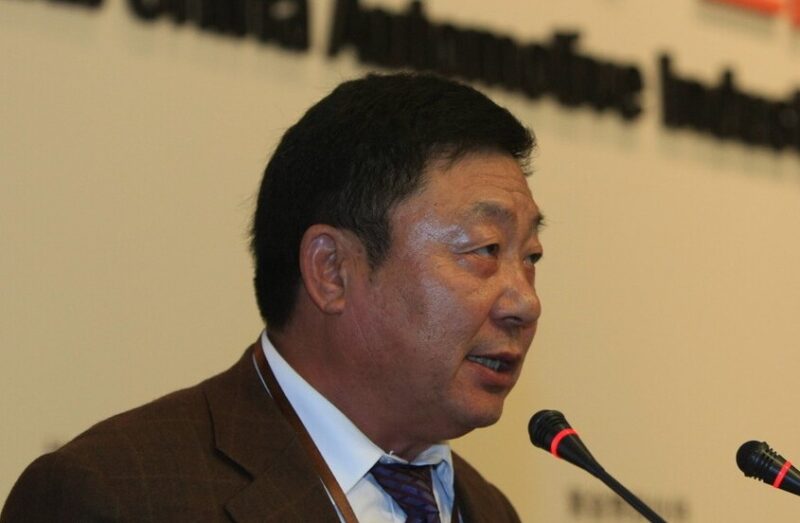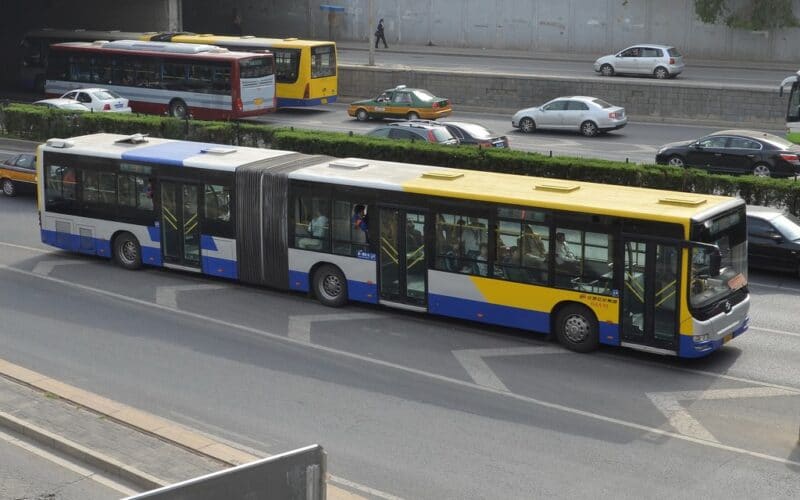The Big Read – Pickups & SUVs (3/5) – Shuguang and Huanghai
Of the few remaining small pickup manufacturers in China, Huanghai is probably the best-known brand name. Part of the name recognition is because the company enjoyed two glorious periods as a successful bus manufacturer. In between, there was lots of trouble. Huanghai originates from Andong city in Liaoning province in northern China and belongs to the earliest car manufacturers in the country. Shuguang is from the same city, but is a privately owned company with a much shorter history. How the paths of the two companies crossed, we’ll find out in just a moment.
Born from war
Andong is a city on the North-Korean border and we start the story on the other side. After the Japanese surrender that ended World War II, Korea was split into two parts. The Russians occupied the northern half, and the allied forces the south. In 1948 both parts became independent nations and both immediately claimed authority over the entire Korean soil. Rising tension inevitably led to war, when the northern forces crossed the border in 1950.
The Korean situation was part of a larger geopolitical conflict over influence in Asia. While the United Nations refused to recognize North Korea or the People’s Republic of China, the Russians vetoed the recognition of South Korea and the Republic of China (Taiwan). Formally the Korean War was between North Korea backed by Russia and South Korea backed by the UN. In practice, the Russians were aided by China, while the UN force was almost exclusively made up of American troops. The conflict ends in 1953 with the institution of the demilitarized zone between the two Koreas.
Because the People’s Republic of China only existed since 1949 and it hasn’t yet built a dense network of institutions, the Korean War comes awkwardly early in its history. China’s aid to the Russians comes from hastily setting up military operations in the northern provinces. Two of these operations are the Automobile Repair Factory and the 2nd Automobile Repair Factory in Andong city, belonging to the Chinese People’s Voluntary Army. Both workshops are set up in 1951 and repair or service vehicles and weaponry damaged in the war.
After the war, in April 1955, both workshops merge and become the Andong Automobile Repair Factory, still under the control of the Volunteer Army. The army transfers control of the factory to the Liaoning public authorities in December 1958 and because of that, the repair business decreases. To make up for the lost labor, the workshop starts making car parts like cylinder liners, valves, and pistons. And they also start assembling the Jianshe 51 truck, a 2-ton truck developed by the Hayang Arsenal in Chongqing. Nowadays Jianshe is better known as a motorcycle manufacturer with a joint venture with Yamaha. The change in business of course necessitates a new name: Andong Auto Parts Factory.
Finding peace with FAW
Assembly of the Jianshe truck is a short-running business. In the fifties, Andong Auto supplied several engineers and technicians to China’s large automotive project in neighboring Jilin province, the First Auto Works. FAW starts making Hongqi cars and Jiefang trucks. Andong Auto starts modifying Jiefang trucks, converting them to dump trucks or tankers. It’s the end of the complete car assembly, Andong Auto is now a modification plant.


There is a single photo of a passenger car produced by Andong Auto, date unknown, but probably around 1960. The car shown is a copy of FAW’s first passenger car, the Dongfeng CA71. Andong Auto put a new cluster of headlights on it. This car, or the bus in the same picture, does not reach series production.
In the 1960s Andong Auto makes a wide variety of modified Jiefang CA10 trucks for special use, agricultural dump trucks, and spare parts for several vehicles. In 1965 Andong city is renamed Dandong city, which brings an update to the name of the car factory: Dandong Automobile Modification Factory.
From modification to replication
In the late sixties there were several small car factories in Liaoning province and the authorities wanted to promote the industry under a single, recognizable brand. So for a short time in the early seventies there were a number of cars under the Liaoning brand, all made by different factories. The Liaoning No. 1 was a light truck by Linghe (a former prison factory), the No.2 a light truck by Shenyang Auto (the predecessor of Jinbei) and No. 4 and 5 were BJ212-derivatives by a bus repair company and a machinery shop in Dalian. No. 3 and 6 were made by Dandong Auto.
Dandong Auto trial produces the Liaoning No. 6 in 1971. It’s difficult to find any details, but to me, the heavy off-road truck looks like a copy of the Dongfeng EQ240. We know a little bit more about the No. 3, because this is a copy of the first truck independently developed in China, the Huanghe JN150. Huanghe (Yellow River) is the predecessor of Sinotruk. The Liaoning brand doesn’t last long and most cars are renamed by their makers. Dandong Auto names an improved version of No. 3 Huanghai (Yellow Sea) DD151. As far as I can find, this is the first appearance of the Huanghai brand.

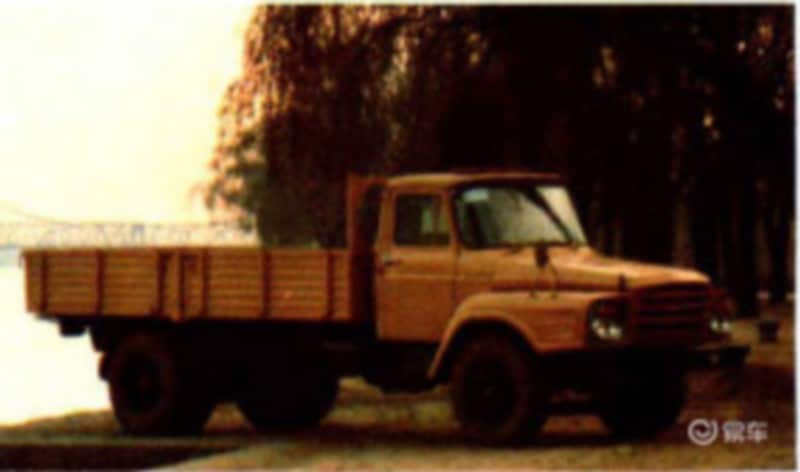

All through the seventies, Dandong Auto produces a combination of modified vehicles and its Huanghai trucks, that appear in 8-ton (DD151) and 12-ton (DD160/161) versions. Around 1980, Dandong Auto produces about 1.000 of these trucks per year. On top of that, it also converts Jiefang trucks and the odd Dongfeng.
A change of industry
Based on the DD151 chassis Dandong Auto introduces a new product in 1981: a city bus. This is the product that will give Huanghai its name recognition. At the time there are two bus manufacturers in the northern area, Harbin Bus and Longjiang Bus. These companies produce buses of rather low quality and during the eighties, Huanghai grabs an increasing part of the market for public transport buses. At the same time, production of trucks and modified vehicles slowly declines, and by the end of the decade, Huanghai is mainly a bus manufacturer. By the way, the new product causes another name change for the factory. In 1983 it becomes Dandong Automobile Manufacturing Plant.
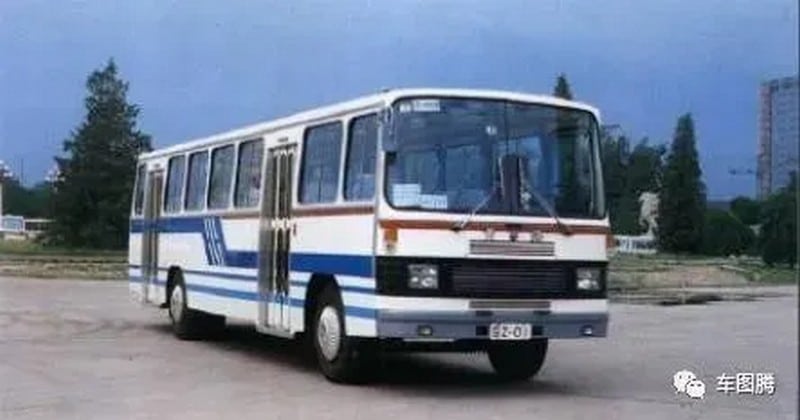
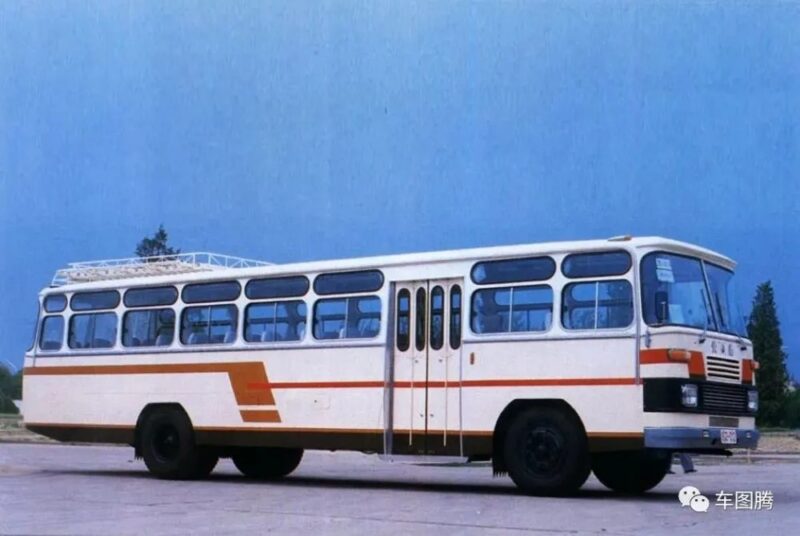
This is the start of the first glory period of Huanghai. By the early nineties, Huanghai has completely eclipsed its competitors in the bus market and is the dominant force in northern China. And Huanghai is not just successful in its own backyard. The company sells well all across China (taking a 65% market share) and exports its products to countries like Peru, Russia, or the Philippines.
Somehow the success instills a sense of complacency in the company. The hard work and major investments of the 1980s are not repeated in the next decade. With more competitors targeting the market, Huanghai continues to rely on its now aging products. Its impressive market share drops quickly. In 1997 it’s 40%, a year later just over 20% and entering the new millennium only 5% market share remains. Huanghai is on the brink of collapse.
A shiny bit amongst a pile of rust
Liaoning province is sometimes compared to the rust belt in the American heartland. It was one of the first areas of China to industrialize, mainly heavy industry in steel and mining. But after the economic reforms following the Cultural Revolution, the area got stuck in decline. The economic activities moved to the eastern coastal area between Shanghai and Guangzhou, targeting more advanced industries. But even in these circumstances, some old-fashioned industries can become competitive.
In 1984, Li Jindian establishes the Dandong Shuguang Motor Vehicle Parts Factory with RMB 70,000 starting capital and a small technical staff. Li’s factory revolves around a single product: axles. So you can call it an enterprise in the ‘old-fashioned’ steel industry. By 1988 Shuguang produces 10,000 axles per year and changed its name to Dandong Shuguang Axle Factory.
The plot-twisting decision comes when Li Jindian decides to self-develop a suspension system for light trucks. The system consists of an independent front suspension with coil springs and a live rear axle with leaf springs. The suspension can be used for a wide variety of vehicles, like light trucks, vans and MPVs, pickups and SUVs, and minivans and –trucks. This suspension proves to be a very successful product, used by many domestic car companies.
Shuguang’s axle production grows exponentially. Many companies buy or have their axles made by Shuguang. And it’s not limited to China, soon international companies have their designs produced (presumably at a much lower cost) by the Dandong axle maker. Shuguang quickly diversifies into a wide range of chassis-related products. It makes its own differential housings and produces chassis, suspension, and steering parts as well as brakes.
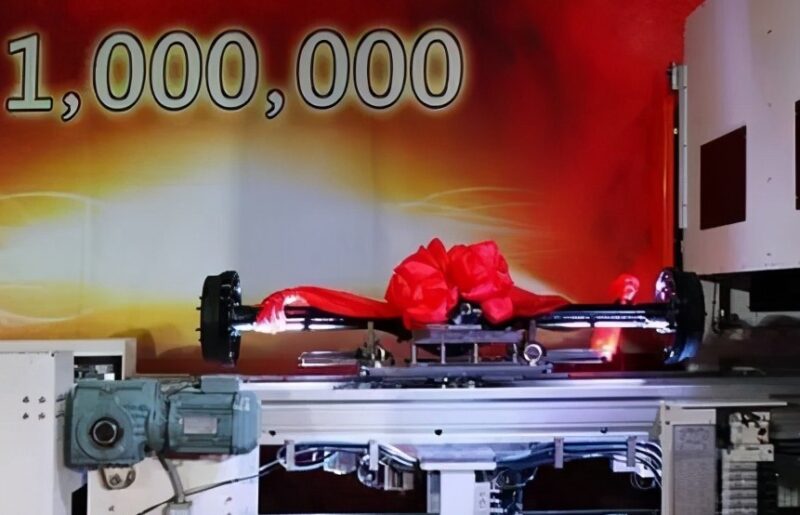
Shuguang’s quick enterprise development requires some organizational changes. In 1993 Liaoning Shuguang Group Co., Ltd. becomes the holding company of all the different activities and the axle factory is formally incorporated as Dandong Shuguang Axle Co., Ltd. at the same time. In 1997 Shuguang becomes the largest manufacturer of axles in China and a few years later it’s an important global player. The holding company Shuguang Group seizes the opportunity and performs a successful listing on the Shanghai Stock Exchange in December 2000.
So Shuguang proves that a traditional iron-working enterprise can become an unexpected success story, even in China’s rust belt.
Dandong car industry consolidation
Meanwhile, the Dandong Automobile Manufacturing Plant, which makes the Huanghai buses, is still in deep trouble. So much so, that in 2001 the company basically becomes insolvent and needs to be rescued. The local government that owns the factory, makes a very logical decision: Shuguang should be part of the reorganization. And with that, Huanghai is privatized. The local authorities set up a committee called Liaoning Huanghai Automobile Group that retains 49% of the shares in the bus factory. The rest is sold to Shuguang Group. The bus factory also gets a new name: Dandong Huanghai Automobile Co., Ltd.
Under Shuguang management, Huanghai starts a major reorganization. So you’d think the worst is over, but in mid-2003 Huanghai closes for months due to SARS infections among its staff. During the year, the debt only increases. For that reason Li Jindian himself takes the reign and carries out even more drastic reforms, cutting costs and introducing new products. And finally the tide changes. Huanghai sales and revenues find the upward trajectory again and there’s light at the end of the tunnel.
Huanghai moves away from tourist and long-distance coaches and shifts cautiously towards city buses. The company’s second glorious era starts in 2005, when it unexpectedly wins the bid to supply buses for the 2008 Beijing Olympics. The winning bid puts the brand in the limelight again, giving Huanghai the opportunity the completely revamp its public image.


Meanwhile, Shuguang established a subsidiary called Shuguang Special Vehicle in 2001. This company was set up to take advantage of Shuguang chassis expertise and move into the business of complete vehicles. The first car is a light truck, but in 2003 the company launches an SUV. Named Tiaozhan in Chinese, it has several names in English, mostly commonly Challenger. It is like many competitors equipped with Foday’s Isuzu-inspired body and Mitsubishi-based engines. More interestingly, Shuguang also makes a 2-door short wheelbase version, called Runway.
The Shuguang car brand has a short lifespan. In December 2006. Shuguang transfers the production line and many other assets of the Special Vehicle company to Huanghai. Now things are nicely divided again. Shuguang makes car parts and Huanghai makes complete vehicles.
The last bus stop
On the back of the Beijing Olympics bid, Huanghai signs a technical cooperation agreement with the German MAN company. The deal mostly concerns the technology for low-floor city buses. With renewed vigor, Huanghai attacks the market and for a while, they’re very successful again. A new series of city buses sell very well, over 5,000 per year is new heights for the brand. On the back of the success, Shuguang ups its shareholding in Huanghai to almost 97%, leaving the Dandong authorities only a handful of shares.
While we’ll turn out attention to the passenger cars soon, let’s just finish the bus story. As Huanghai abandons the long-distance bus segment, it just starts to take off. With growing wealth in the country and rising numbers of tourists, the demand rises quickly. Huanghai however sticks to public transit buses. For a while, they do very well, but they do experience growing competition. Yutong passes Huanghai as the nation’s number one seller in 2008 and in the early 2010s others react quicker to the change to electric buses.
Sales drop again, to about a thousand a year, but occasionally the company gets some large orders. Huanghai still makes buses, but it’s now a small company, far away from its former glory.
The Huanghai car brand
The first Huanghai cars appear in 2007 starting with a rebranded version of the Shuguang Challenger. There is also the Aurora (Aolong) SUV and the Antelope (Aolin) pickup. These were launched as Shuguang just two months earlier, but entered production as Huanghai for real. Both are built along the same principles as the Challenger. The real news however is the Landscape (Qisheng) SUV and Plutus (Dachaishen) pickup.
We can be short about the Plutus, as we met the same car a few weeks ago in the article about JAC and Anchi. The Anchi and Plutus pickup are largely identical, including their two distinct body styles, imitating an Isuzu or Chevrolet truck respectively. The Landscape is a SUV on the same platform and with mostly the same engines. It’s got a different look though, but not really an original one. The Landscape looks rather much like Hyundai’s Sante Fe front merged with a Kia Sorrento’s rear and interior. It creates quite a stir. Huanghai doesn’t make things better when they update the Landscape a year and a half later: the Hyundai front gets traded for a Mercedes look-alike nose.
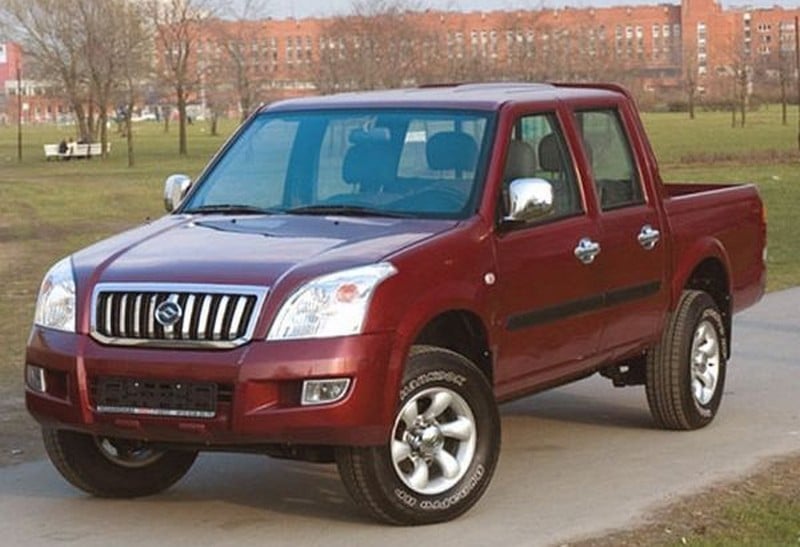
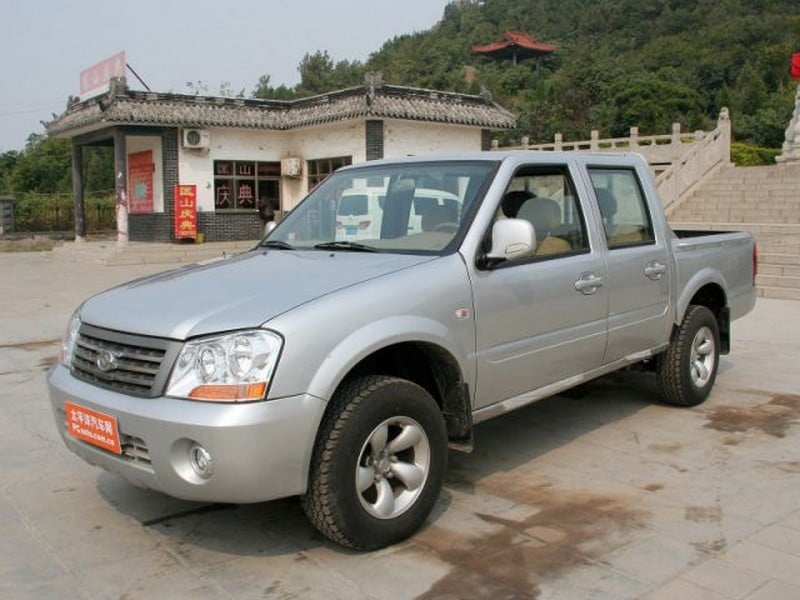
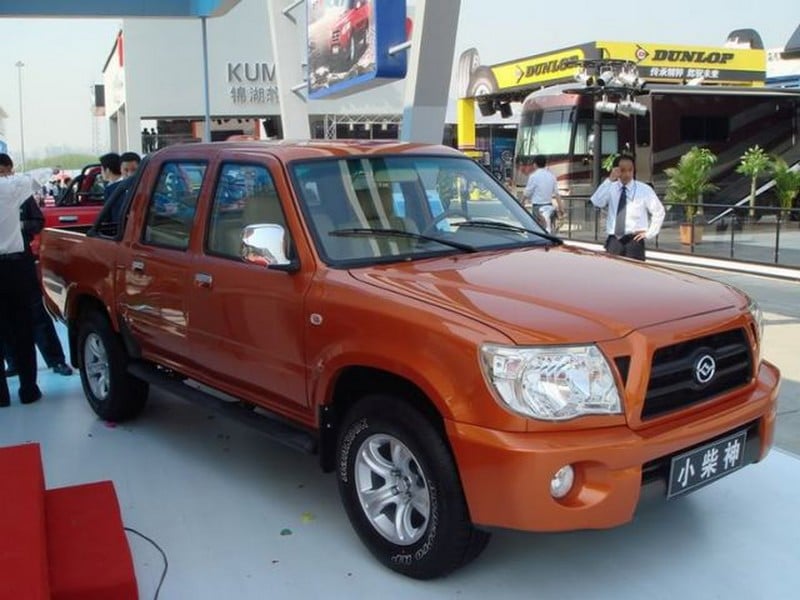
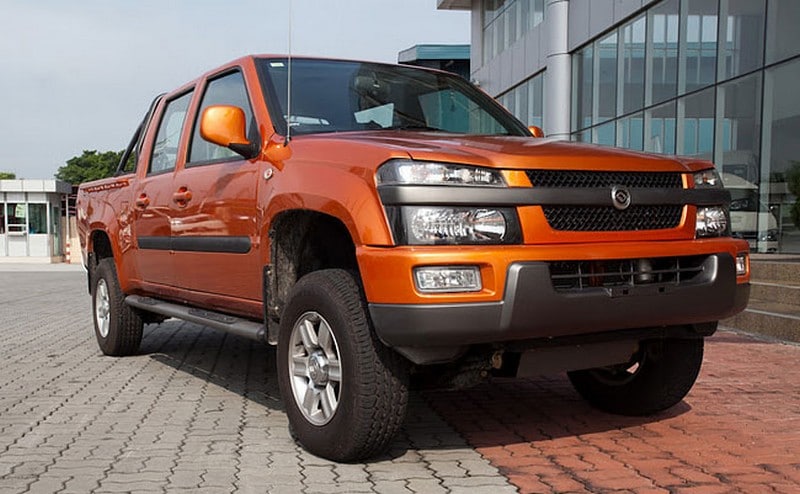
By 2009 Huanghai achieved reasonable success in the market. The pickups are the quickest sellers, about 60.000 of them that year. SUVs are bit behind with 10.000 sales. Huanghai adds new capacity with an extra dedicated line for SUVs, preparing for further growth.
Huanghai’s next car again is a head turner for all the wrong reasons. The Landscape V3 takes its looks from the Lexus RX in a very obvious way. There’s no attempt to hide the fact the body is a complete copy. Technically the car is still closely related to the Landscape F1, the updated version of the original Landscape. Sometimes these copies work, but in Huanghai’s case it doesn’t. SUV sales remain behind the pickup sales, only a few thousand units per year. Not even a large price reduction could change its fortune.

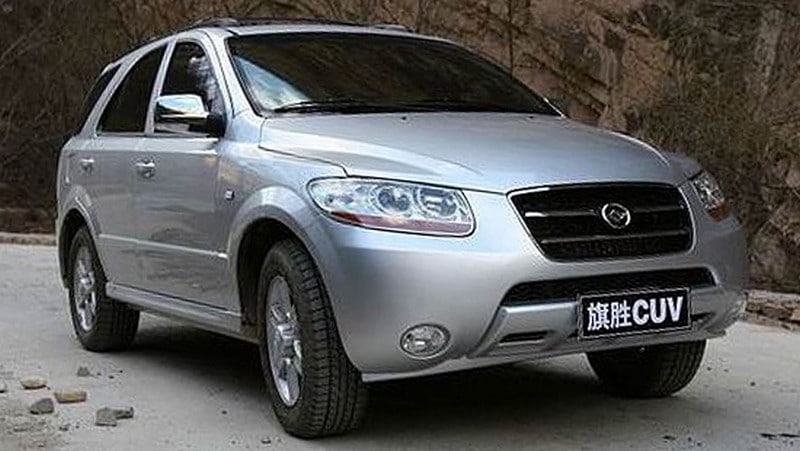
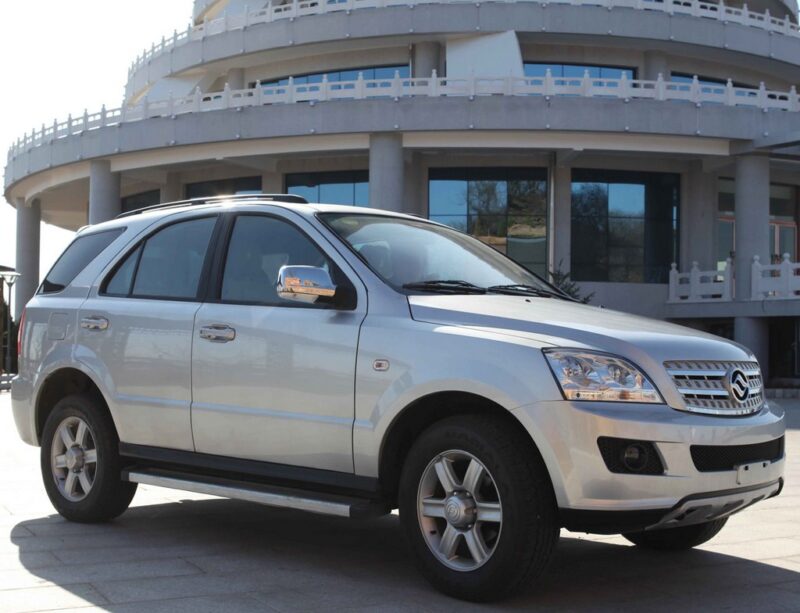

With the pickups Huanghai adds another two models alongside the Antelope and Plutus. The smaller of the two is called Major (Xiaochaishen) and looks inspired by the Toyota Tacoma. The bigger Prince (Wangzi, also called Plutus mk.2) has a front end resembling the VW Amarok. Again, technically there’s not much new, but with this line-up Huanghai hangs on to its position as mid-sized pickup manufacturer.
The next generation
There has been a theme with all the Huanghai cars so far: they all have some design cues borrowed from better-known brands. In 2014 however, the company makes a radical change. It introduces its second-generation vehicle, a pickup called N1. And this time the body is an original design. In fact, the N1 is a strong departure from the earlier cars. It has a nice, tough look and strong branding with the abbreviated name HHN1 in huge letters on the grille.
The N1 marks a new chapter for Huanghai. In less than a year the company phases out all its older products and relies on the new car solely. The N1 is a basic mid-size pickup with a new chassis and fresh design. A luxury version called N1S follows a little later. And that’s just the first step in Huanghai’s second-generation pickup. The brand brings new versions regularly. Above the N1 sits the 2015 N2 and N2S with more sporty styling. The 2017 N3 gets a more rugged appearance and Huanghai tops off the range with the N7 in 2019. This pickup is marketed as an ‘American style truck’, reflected in the styling.



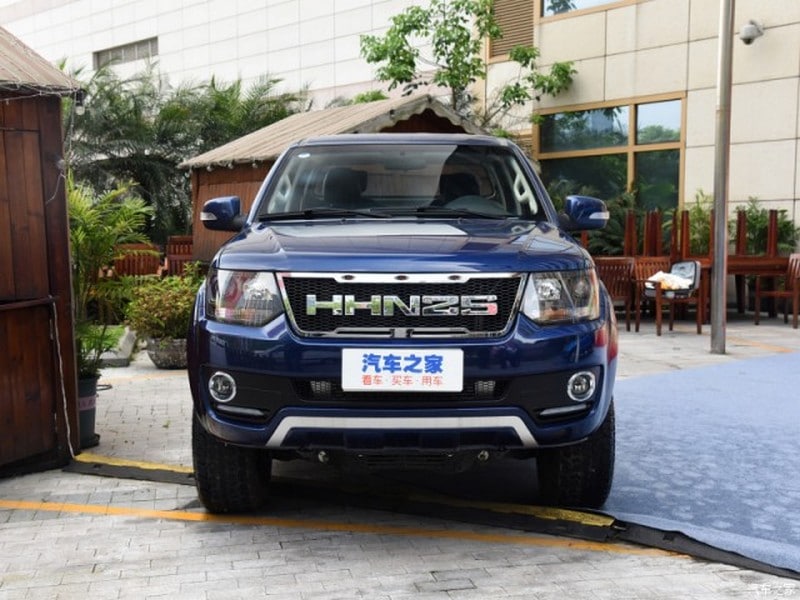

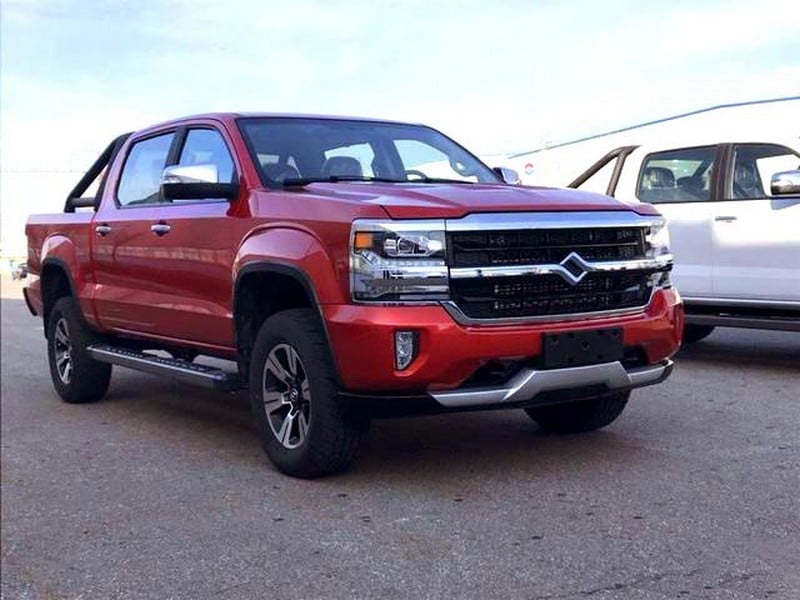
Despite the modern looks and better quality, the N-series pickups do not bring Huanghai to the top of sales lists. 20.000 or so are sold every year, which means Huanghai is now a rather small brand. A van called Raytour (Ruiti) also joins the model range.
Over the years Huanghai makes small changes now and then, but much stays the same for a long time. Now almost eight years into its life, you might expect a new model coming up, but Huanghai doesn’t have the funds. So since last the N-series are heavily reworked and released under new names. The N1 has become the Small Cow (Xiaoniu), the N1S Big Cow (Daniu), the N2S Bison (Yeniu), the N3 Taurus (Jinniu), and the N7 Bull (Mengniu).
Hawtai makes a mess
While Huanghai sales numbers are nothing special, the Shuguang components business is still doing very well. However, the car business is making losses and parent Shuguang knows something has to be done. So in 2017, they sell about 20% of the shares of Liaoning Shuguang Group to Hawtai Automobile, in an attempt to strengthen the business. Hawtai becomes the largest shareholder, while founder Li Jindian only has 1% of the shares in the company.
Hawtai is a privately owned car manufacturer, founded by a businessman from Inner Mongolia called Zhang Xiugen. There’s enough to tell about Hawtai to warrant its own automaker story (maybe sometime in the future), but for now, I’ll stick to a short summary. Hawtai started making cars based on licensed Hyundai technology in 2002. The makes Santa Fe copy sold quite well and Hawtai looked like another successful new car brand. The company invested heavily in diesel engine technology and then diversified into coal mining, banking, and real estate.
The turnaround came in 2019 when Hawtai defaulted on a large bond. Subsequent investigations revealed that the company was built on an enormous amount of debt and was basically insolvent. It was the start of many lawsuits and a long judicial process that lasts until today. The company has several lawsuits against it, asking for bankruptcy proceedings. In 2019 Hawtai seized car production and no cars have been made or sold since. As a result of the judicial process, its shareholdings have been frozen, including the one in Shuguang Group.
Freezing a shareholding means that it cannot be sold, to protect the creditors of the shareholder against malicious transactions. This is a problem for Shuguang. They know Hawtai won’t (and can’t) put any money in, but finding new shareholders or investors is hardly possible. Who wants to invest in a company whose largest (and controlling) shareholder is chin-deep in legal procedures and on the brink of collapse? So Shuguang and Huanghai have been run as an ongoing concern, but on a limited budget and with little room for large investments.
The legal process concerning Hawtai now almost enters its third year and there’s hardly any news about the case. It’s unknown if some sort of resolution is even in sight. And until this problem gets resolved, Shuguang and Huanghai will exist in some sort of limbo, with little opportunity to free themselves from the stranglehold. So far they survive, but the future is anything but certain.
In two weeks
Your writer is on a short leave next week, so the next article is due in two weeks’ time. Then we’ll turn our attention to another company trying not to fall off the financial high wire: Changfeng Liebao, maker of the Leopaard SUVs.
Read more Automakers Stories
Every week we publish one exiting article about history of famous Chinese Automakers. Check the ones you haven’t read yet.
